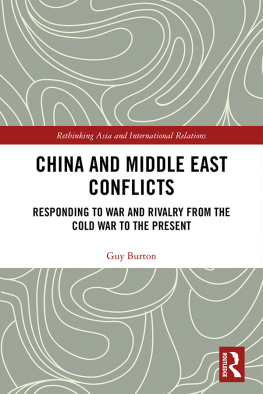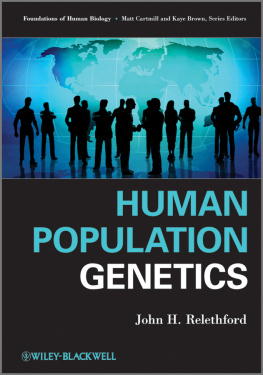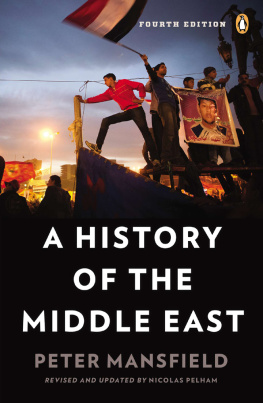GENETIC CROSSROADS
The Middle East and the Science of Human Heredity
Elise K. Burton
STANFORD UNIVERSITY PRESS
Stanford, California
Stanford University Press
Stanford, California
2021 by the Board of Trustees of the Leland Stanford Junior University.
All rights reserved.
No part of this book may be reproduced or transmitted in any form or by any means, electronic or mechanical, including photocopying and recording, or in any information storage or retrieval system without the prior written permission of Stanford University Press.
Printed in the United States of America on acid-free, archival-quality paper
Library of Congress Cataloging-in-Publication Data
Names: Burton, Elise K., author.
Title: Genetic crossroads : the Middle East and the science of human heredity / Elise K. Burton.
Description: Stanford, California : Stanford University Press, 2021. | Includes bibliographical references and index.
Identifiers: LCCN 2020021120 (print) | LCCN 2020021121 (ebook) | ISBN 9781503611917 (cloth) | ISBN 9781503614567 (paperback) | ISBN 9781503614574 (ebook)
Subjects: LCSH: Human geneticsPolitical aspectsMiddle EastHistory. | NationalismMiddle EastHistory. | Nationalism and scienceMiddle EastHistory.
Classification: LCC QH428.2.M628 B87 2021 (print) | LCC QH428.2.M628 (ebook) | DDC 616/.0420956dc23
LC record available at https://lccn.loc.gov/2020021120
LC ebook record available at https://lccn.loc.gov/2020021121
Cover design: Rob Ehle
Cover map: Persia, Afghanistan and Beluchistan Showing Lord
Ronaldshays Route, from Sport and Politics Under an Eastern Sky by the Earl of Ronaldshay, William Blackwood and Sons, 1902. Perry-Castaeda Library Map Collection, University of Texas.
Typeset by Motto Publishing Services in 10.5 on 14.5 Brill
To my family
Contents
Abbreviations
| ABGL | Anthropological Blood Grouping Laboratory (Beirut) |
| AGHP | Anatolian Genetic History Project |
| AUB | American University of Beirut |
| BGRL | Blood Group Reference Laboratory (London) |
| CHP | Cumhuriyet Halk Partisi (Republican Peoples Party, of Turkey) |
| CISNU | Confederation of Iranian StudentsNational Union |
| DDT | dichlorodiphenyltrichloroethane (a pesticide) |
| DNA | deoxyribose nucleic acid |
| DTCF | Dil Tarih-Corafya Fakltesi (Language and History-Geography Faculty at Ankara University) |
| FAO | Food and Agriculture Organization |
| G6PD(d) | Glucose-6-phosphate dehydrogenase (deficiency) |
| GP | Genographic Project |
| HbS | hemoglobin S |
| HGDP | Human Genome Diversity Project |
| HLA | human leukocyte antigen |
| IBP | International Biological Program |
| ICSU | International Council of Scientific Unions |
| IGP | Iranian Genome Project |
| IHGP | Iranian Human Genome Project |
| IHMGB | Iranian Human Mutation Gene Bank |
| INBTS | Iranian National Blood Transfusion Service |
| JDC | Jewish Joint Distribution Committee |
| mtDNA | mitochondrial DNA |
| NIH | National Institutes of Health (USA) |
| PKK | Partiya Karkern Kurdistan (Kurdistan Workers Party) |
| RAF | Royal Air Force (United Kingdom) |
| SAVAK | Szimn-i Iilt va Amniyat-i Kishvar (National Organization for Security and Intelligence, of Iran) |
| SPGL | Serological Population Genetics Laboratory (London) |
| TGP | Trkiye Genom Projesi (Turkey Genome Project) |
| UNESCO | United Nations Educational, Scientific and Cultural Organization |
| UNRWA | United Nations Relief and Works Agency |
| WHO | World Health Organization |
Note on Transliteration
Hebrew and Persian have been transliterated according to the Library of Congress systems. Arabic follows the transliteration system of the International Journal of Middle East Studies. Personal names are transliterated without diacritics or follow the individuals preferred spelling in Roman script.
Acknowledgments
Nearly ten years have passed since I began the research for this book. The idea was hatched while I was at the University of California, Berkeley, trying to figure out how to pursue biology and Middle Eastern studies together. Emily Gottreich wisely counseled me that I was better suited to being a historian than an anthropologist. I cant thank her enough for setting me on the right path. Likewise, I am enormously grateful to Susan Kahn for believing so fiercely in my project and seeing me through my early years at Harvard. This research required a fleet of supportive faculty and staff from the Center for Middle Eastern Studies, the History of Science Department, and the Program for Studies of Women, Gender, and Sexuality. Afsaneh Najmabadi, Sarah Richardson, and Janet Browne regularly went beyond the call of duty to make sure this project, and my career, could succeed. Cemal Kafadar, Sheila Jasanoff, Steve Caton, and the late Roger Owen also offered crucial advice at different stages of the project.
Generous funding for my research was provided by the Social Science Research Council, the Council on Library and Information Resources, the American Institute of Iranian Studies, the Harvard Graduate School of Arts and Sciences, and the Harvard Center for Middle Eastern Studies. Support for language training in Persian and Turkish was also provided by the Institute of Turkish Studies and the Critical Language Scholarship Program.
. I am also grateful to friends and colleagues who helped me obtain copies of materials in far-flung libraries, namely Jenny Tan, Alex Warburton, Rachel Schine, and Jim Ryan.
Many colleagues during my time at Harvard, Cambridge, and around the world provided advice and support. In the early stages of my research on Turkey, I met with Sanem Gven-Salgrl, Murat Ergin, and Nazan Maksudyan in Istanbul. I thank them for their advice and encouragement. In 2015, I enjoyed several months at the Ankara hostel of the American Research Institute in Turkey, where I was inspired by chats with Cheryl Anderson and Anat Goldman. I also thank Murat Glsaan for sharing his discovery of a rare Turkish high school biology textbook from 1939. In Israel, the hospitality and generosity of Michal Hasson and Ohad Shamir made Jerusalem and Rehovot feel like home. Other colleagues and friends at Harvard who offered an exceptional degree of companionship, advice, support, and feedback on my work include Ceyhun Arslan, Mou Banerjee, Arbella Bet-Shlimon, Shireen Hamza, Neelam Khoja, Bethany Kibler, Andrew McDowell, Ian McGonigle, Sreemati Mitter, Eli Nelson, Shaun Nichols, Mircea Raianu, Kathryn Schwartz, Alex Shams, Sarah Shehabuddin, Arslan Tazeem, and Rustin Zarkar.
A junior research fellowship from Newnham College at the University of Cambridge made it possible for me to write this book in its current form. I am grateful for the support and encouragement offered by Newnham fellows and affiliates Kate Fleet, Manali Desai, Yael Navaro, Sheila Watts, Janine Maegraith, Gillian Sutherland, and Gabriela Ramos. I greatly appreciated the companionship of Newnhams other research fellows, especially Asiya Islam, Mezna Qato, and Ccile Bushidi. I also benefited extensively from colleagues in Cambridge departments and faculties, especially the History and Philosophy of Science Department, where Mary Brazelton, Helen Curry, and Nick Hopwood were founts of advice. It was a special pleasure to work on this book alongside Jenny Bangham as she finished her own. Our mutual interests in Arthur Mourant and the other fascinating historical figures in British blood group genetics made for fruitful and delightful conversations. Charu Singh, Sarah Abel, and Serta Sehlikolu served as incredibly important sounding boards in the development of this book. I also enjoyed the guidance and feedback of Hana Sleiman, Chris Wilson, Assef Ashraf, Helen Pfeifer, Arthur Asseraf, Andrew Arsan, and Saul Dubow in the Faculty of History, and Khaled Fahmy in the Faculty of Asian and Middle Eastern Studies.






